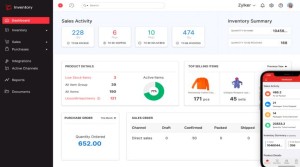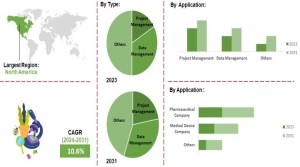Top 8 Ways to Save Money on Everyday Expenses
It's essential to save money on things you buy every day. This helps you manage your money and can lead to significant savings.

It's essential to save money on things you buy every day. This helps you manage your money and can lead to significant savings. By watching how you spend and making minor changes to your daily life, you can save money to reach your goals, like saving for the future or buying something special. Here's a simple and thorough guide to innovate ways to cut everyday expenses and how they can help.
1. Track Your Spending
The first step in saving money knows where you spend it. By tracking all expenses for a month or two, individuals can identify areas of unnecessary spending. These could include frequent dining out, subscription services, or impulse purchases. Once identified, these can be curtailed or eliminated to reduce overall costs.
2. Create a Budget
A well-planned budget is a roadmap for financial success. It helps allocate money to essential expenses like housing, utilities, groceries, and transportation while setting aside funds for savings and discretionary spending. Sticking to a budget ensures one lives within one's means and avoids unnecessary debt.
3. Reduce Utility Bills
Energy and water use account for a large portion of monthly bills. Simple steps like using energy-efficient appliances, unplugging devices when not in use, fixing leaks, and setting thermostats to energy-saving modes can lead to substantial savings on utility bills. Shopping around for better electricity, gas, and internet rates can further reduce costs.
4. Cut Grocery Costs
Groceries take up a big part of a household's budget, but there are ways to save money on them. Planning meals, making shopping lists, and sticking to them can prevent impulse buys. Buying in bulk, choosing store brands, and taking advantage of sales and coupons can lower grocery bills. Moreover, reducing food waste by properly storing leftovers and repurposing ingredients can stretch grocery dollars even further.
5. Limit Dining Out and Takeout
Eating out is convenient but can be costly. Preparing meals at home is often healthier and more economical. Individuals can save considerable money by limiting dining out to special occasions and preparing meals in bulk for the week. Opting for lunch instead of dinner, sharing dishes, or choosing restaurants with specials or discounts can also help reduce expenses.
6. Use Public Transportation or Carpool
Transportation costs, including gas, maintenance, and parking can increase quickly. Opting for public transportation, biking, walking, or carpooling with colleagues can significantly reduce these costs. If feasible, consider working remotely or negotiating a compressed work-week to reduce commuting expenses.
7. Shop Smart
Regarding non-essential purchases, waiting for sales, using discount codes, or buying second-hand items can lead to significant savings. Additionally, subscribing to price-tracking websites and apps can help identify the best times to buy big-ticket items.
8. Avoid Impulse Purchases
One of the most effective ways to save money is by avoiding impulse purchases. Before buying non-essential items, give yourself a cooling-off period to determine if the purchase is necessary. This simple habit can prevent overspending and reduce financial stress.
Whether you're saving up for something special, building a safety net for tough times, or planning for your future, learning how to save money can help. Here we have described various approaches to help you save money daily while leveraging tools and techniques to maximize your savings.
Various Aspects of Money Saving Techniques
Money-Saving Tips
Small, everyday actions can add up to substantial savings over time. Start by cutting unnecessary expenses. This could include limiting dining out, canceling unused subscriptions, and shopping with a list to avoid impulse purchases. Another helpful tip is to take advantage of discounts, coupons, and cash back offers. By being mindful of sales and promotions, you can significantly reduce your spending on groceries, clothing, and household items.
Best Way to Save Money
First, figure out how much you earn and spend. See where your money goes. Decide what you need to spend money on (like food and rent) and what you want to spend money on (like going out or buying clothes). Then, plan how to spend your money. One easy way is to spend half on needs, one-third on wants, and one-fifth on saving. But you can change these numbers to fit your life and goals. Saving is essential, so make sure to include it in your plan.
Budgeting Strategies
Figure out how much you earn and spend and see where your money goes. Decide what you must spend money on (like food and rent) and what you don't need (like going out). A simple way to divide your money is the 50/30/20 rule. Use half of your money for needs, 30% for fun things, and save 20%. But you can change these numbers to fit your life and goals.
Saving is Essential, so try to Put Money Aside in Protected Bonds
For long-term savings, consider investing in protected bonds. These low-risk investment vehicles offer a guaranteed return, making them an excellent option for preserving capital while earning interest. Although the returns may be lower than riskier investments, protected bonds provide stability and security, especially during economic downturns.
Ways to Budget and Save Money
In addition to traditional budgeting methods, there are creative ways to save money. For example, cash envelopes can be used for discretionary spending categories like entertainment or dining out. Once the cash is gone, you know you've hit your limit for that category. Additionally, use apps and tools that track your spending and suggest areas where you can cut back. These tools can show how you spend your money and help you make better choices.
Earn Interest on Your Savings
Maximizing the interest you earn on savings is another intelligent way to grow your money. Consider opening a high-yield savings account or a certificate of deposit (CD) that offers higher interest rates than standard savings accounts. The more interest you earn, the faster your savings will grow without any extra effort.
Cut-Out Non-Essential Expenses
If you need to save money quickly, consider temporarily cutting out non-essential expenses. This might include skipping vacations, reducing entertainment costs, or postponing large purchases. You can soon get more money to save by selling things you don't use anymore or getting a part-time job. The key is to be disciplined and focused on your short-term savings goal.
Use Saving Wallets
Digital wallets and apps dedicated to saving can help you manage your finances more effectively. These tools allow you to save money for things you want, watch your savings grow, and even save extra change from purchases. By automating and streamlining the savings process, these wallets make building and maintaining healthy financial habits easier.
Doing these things can help you save a lot of money over time. Even though each thing might not seem like much, they can make a big difference in how much money you have. By making good choices, planning how you spend your money, and buying things you need instead of things you want, you can feel better about your money and have more. The money you save can be used for important things like saving for emergencies, paying off what you owe, or saving for the future.

It's essential to save money on things you buy every day. This helps you manage your money and can lead to significant savings. By watching how you spend and making minor changes to your daily life, you can save money to reach your goals, like saving for the future or buying something special. Here's a simple and thorough guide to innovate ways to cut everyday expenses and how they can help.
1. Track Your Spending
The first step in saving money knows where you spend it. By tracking all expenses for a month or two, individuals can identify areas of unnecessary spending. These could include frequent dining out, subscription services, or impulse purchases. Once identified, these can be curtailed or eliminated to reduce overall costs.
2. Create a Budget
A well-planned budget is a roadmap for financial success. It helps allocate money to essential expenses like housing, utilities, groceries, and transportation while setting aside funds for savings and discretionary spending. Sticking to a budget ensures one lives within one's means and avoids unnecessary debt.
3. Reduce Utility Bills
Energy and water use account for a large portion of monthly bills. Simple steps like using energy-efficient appliances, unplugging devices when not in use, fixing leaks, and setting thermostats to energy-saving modes can lead to substantial savings on utility bills. Shopping around for better electricity, gas, and internet rates can further reduce costs.
4. Cut Grocery Costs
Groceries take up a big part of a household's budget, but there are ways to save money on them. Planning meals, making shopping lists, and sticking to them can prevent impulse buys. Buying in bulk, choosing store brands, and taking advantage of sales and coupons can lower grocery bills. Moreover, reducing food waste by properly storing leftovers and repurposing ingredients can stretch grocery dollars even further.
5. Limit Dining Out and Takeout
Eating out is convenient but can be costly. Preparing meals at home is often healthier and more economical. Individuals can save considerable money by limiting dining out to special occasions and preparing meals in bulk for the week. Opting for lunch instead of dinner, sharing dishes, or choosing restaurants with specials or discounts can also help reduce expenses.
6. Use Public Transportation or Carpool
Transportation costs, including gas, maintenance, and parking can increase quickly. Opting for public transportation, biking, walking, or carpooling with colleagues can significantly reduce these costs. If feasible, consider working remotely or negotiating a compressed work-week to reduce commuting expenses.
7. Shop Smart
Regarding non-essential purchases, waiting for sales, using discount codes, or buying second-hand items can lead to significant savings. Additionally, subscribing to price-tracking websites and apps can help identify the best times to buy big-ticket items.
8. Avoid Impulse Purchases
One of the most effective ways to save money is by avoiding impulse purchases. Before buying non-essential items, give yourself a cooling-off period to determine if the purchase is necessary. This simple habit can prevent overspending and reduce financial stress.
Whether you're saving up for something special, building a safety net for tough times, or planning for your future, learning how to save money can help. Here we have described various approaches to help you save money daily while leveraging tools and techniques to maximize your savings.
Various Aspects of Money Saving Techniques
Money-Saving Tips
Small, everyday actions can add up to substantial savings over time. Start by cutting unnecessary expenses. This could include limiting dining out, canceling unused subscriptions, and shopping with a list to avoid impulse purchases. Another helpful tip is to take advantage of discounts, coupons, and cash back offers. By being mindful of sales and promotions, you can significantly reduce your spending on groceries, clothing, and household items.
Best Way to Save Money
First, figure out how much you earn and spend. See where your money goes. Decide what you need to spend money on (like food and rent) and what you want to spend money on (like going out or buying clothes). Then, plan how to spend your money. One easy way is to spend half on needs, one-third on wants, and one-fifth on saving. But you can change these numbers to fit your life and goals. Saving is essential, so make sure to include it in your plan.
Budgeting Strategies
Figure out how much you earn and spend and see where your money goes. Decide what you must spend money on (like food and rent) and what you don't need (like going out). A simple way to divide your money is the 50/30/20 rule. Use half of your money for needs, 30% for fun things, and save 20%. But you can change these numbers to fit your life and goals.
Saving is Essential, so try to Put Money Aside in Protected Bonds
For long-term savings, consider investing in protected bonds. These low-risk investment vehicles offer a guaranteed return, making them an excellent option for preserving capital while earning interest. Although the returns may be lower than riskier investments, protected bonds provide stability and security, especially during economic downturns.
Ways to Budget and Save Money
In addition to traditional budgeting methods, there are creative ways to save money. For example, cash envelopes can be used for discretionary spending categories like entertainment or dining out. Once the cash is gone, you know you've hit your limit for that category. Additionally, use apps and tools that track your spending and suggest areas where you can cut back. These tools can show how you spend your money and help you make better choices.
Earn Interest on Your Savings
Maximizing the interest you earn on savings is another intelligent way to grow your money. Consider opening a high-yield savings account or a certificate of deposit (CD) that offers higher interest rates than standard savings accounts. The more interest you earn, the faster your savings will grow without any extra effort.
Cut-Out Non-Essential Expenses
If you need to save money quickly, consider temporarily cutting out non-essential expenses. This might include skipping vacations, reducing entertainment costs, or postponing large purchases. You can soon get more money to save by selling things you don't use anymore or getting a part-time job. The key is to be disciplined and focused on your short-term savings goal.
Use Saving Wallets
Digital wallets and apps dedicated to saving can help you manage your finances more effectively. These tools allow you to save money for things you want, watch your savings grow, and even save extra change from purchases. By automating and streamlining the savings process, these wallets make building and maintaining healthy financial habits easier.
Doing these things can help you save a lot of money over time. Even though each thing might not seem like much, they can make a big difference in how much money you have. By making good choices, planning how you spend your money, and buying things you need instead of things you want, you can feel better about your money and have more. The money you save can be used for important things like saving for emergencies, paying off what you owe, or saving for the future.
Conversation
Latest Blogs
© Blog CoolCalculator, Explore CoolCalculator, your destination for the latest insights, tips, and updates on the world of online calculators. Stay informed and make your calculations smarter with our blog. ,
Designed
by Saad Media Team , Team Lead M.Rizwan Akhtar












